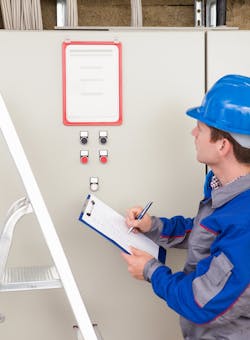At one time, it was a big deal to get maintenance departments to move from reactive maintenance to preventive maintenance (PM). But many plants made the transition, at least in part. When affordable, fully-featured computerized maintenance management systems (CMMSs) became available for desktop computers, the shift was even greater.
While reactive maintenance is still being done more than it should be, companies generally support a PM orientation in their maintenance departments. But usually only when maintenance people aren’t repairing things, other departments aren’t dumping project work on them, and executives with stock options haven’t “deferred” maintenance in a cost-increasing (short-term cost saving) effort to boost the stock price.
With those and other barriers to keeping PMs on schedule and done correctly, it’s the rare shop that can keep equipment running properly by relying on PMs. You must think outside that box. Using predictive technologies, such as infrared and ultrasonic (especially if used together), is a good place to start.
About the Author

Mark Lamendola
Mark is an expert in maintenance management, having racked up an impressive track record during his time working in the field. He also has extensive knowledge of, and practical expertise with, the National Electrical Code (NEC). Through his consulting business, he provides articles and training materials on electrical topics, specializing in making difficult subjects easy to understand and focusing on the practical aspects of electrical work.
Prior to starting his own business, Mark served as the Technical Editor on EC&M for six years, worked three years in nuclear maintenance, six years as a contract project engineer/project manager, three years as a systems engineer, and three years in plant maintenance management.
Mark earned an AAS degree from Rock Valley College, a BSEET from Columbia Pacific University, and an MBA from Lake Erie College. He’s also completed several related certifications over the years and even was formerly licensed as a Master Electrician. He is a Senior Member of the IEEE and past Chairman of the Kansas City Chapters of both the IEEE and the IEEE Computer Society. Mark also served as the program director for, a board member of, and webmaster of, the Midwest Chapter of the 7x24 Exchange. He has also held memberships with the following organizations: NETA, NFPA, International Association of Webmasters, and Institute of Certified Professional Managers.
